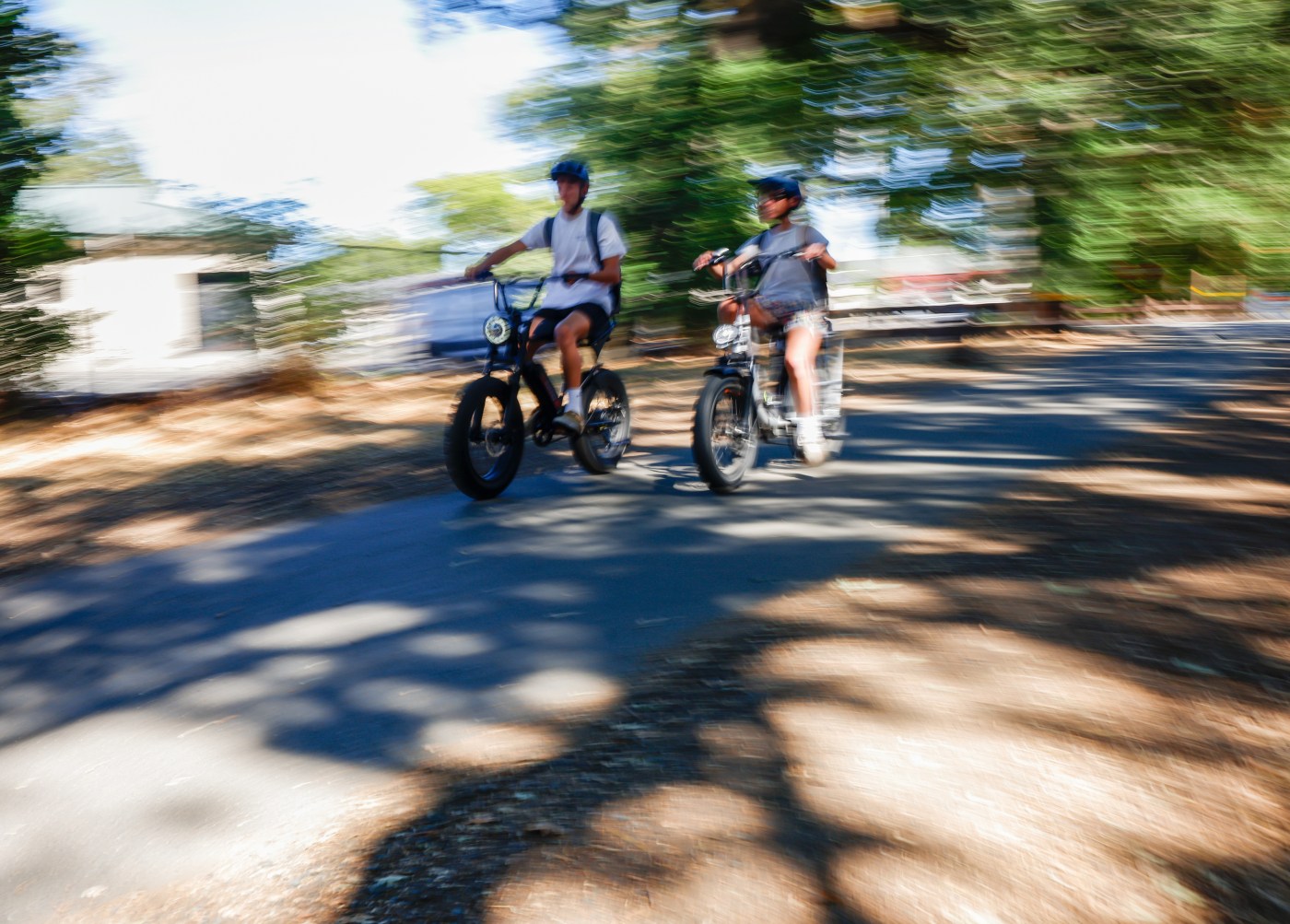
The popularity of electric bikes has prompted specific legislation in California — and tighter restrictions by some cities. Here are the basics concerning e-bikes and under-18 riders.
Related Articles
Letters: National Guard deployment in Los Angeles threatens rights of all
‘Like getting tickets to a Taylor Swift concert’: State officials pledge improvements to botched e-bike signups
Letters: Where is Newsom as refinery closures threaten state economy?
Commuters protest Richmond-San Rafael Bridge bike pathway
After troubled rollout, California sets new date for e-bike subsidies
Can a child ride an electric bike?
There is no minimum age for two of the three classes of electric bikes, Class 1 and Class 2, on which the motor assist tops out at 20 mph.
Class 3, which tops out at 28 mph, is limited to age 16 and up. No license is required.
How can I tell what class an e-bike is?
It’s required to have a label including the class number, top assisted speed and motor wattage (which for an ebike can’t exceed 750 watts).
If the rider isn’t pedaling, does that mean it’s Class 3?
The motor on Class 1 and Class 3 e-bikes provides assistance only when the rider is pedaling. Class 2 is the one that allows motorized assistance by throttle, up to 20 mph. All classes must have operable pedals.
Does a child on an e-bike have to wear a helmet?
Helmets are required for Class 1 and Class 2 e-bike riders 17 and under, as well as all Class 3 riders.
Are ebikes allowed in the motor vehicle lane of a street?
Generally, an e-bike has to follow the same rules as a conventional bicycle when it comes to riding on the street, and local rules supersede statewide ones. If there is a bike lane, e-bike riders moving slower than car traffic must use it, unless they’re passing, preparing to turn or avoiding a hazard.
Are e-bikes allowed on sidewalks?
As with the answer above, Class 1 and Class 2 e-bikes are generally allowed on any sidewalks or paved paths where normal bicycles are allowed, although some municipalities have instituted different rules. Class 3 bikes are generally not allowed on sidewalks or bike/walking paths.
What about off-road use?
Rules for trails and parks are determined by the agency overseeing the property. If the agency doesn’t specify otherwise, Class 1 and Class 2 e-bikes can ride on trails and Class 3 cannot.
Can an e-bike rider carry a passenger?
The California Department of Motor Vehicles says Class 3 e-bikes must not transport passengers. It does not specifically address Class 1 or Class 2, but the general restriction suggests a passenger would be allowed if the bike is equipped with a second seat.
What local agencies have stricter rules about e-bikes?
Under a pilot program starting July 1, 2025, Marin County will have a minimum age of 16 to ride a Class 2 e-bike.
Under a similar program that started this year, San Diego County communities are allowed to prohibit riders under 12 from operating Class 1 and Class 2 e-bikes. A bill now in the Legislature would allow Orange County communities to do the same.